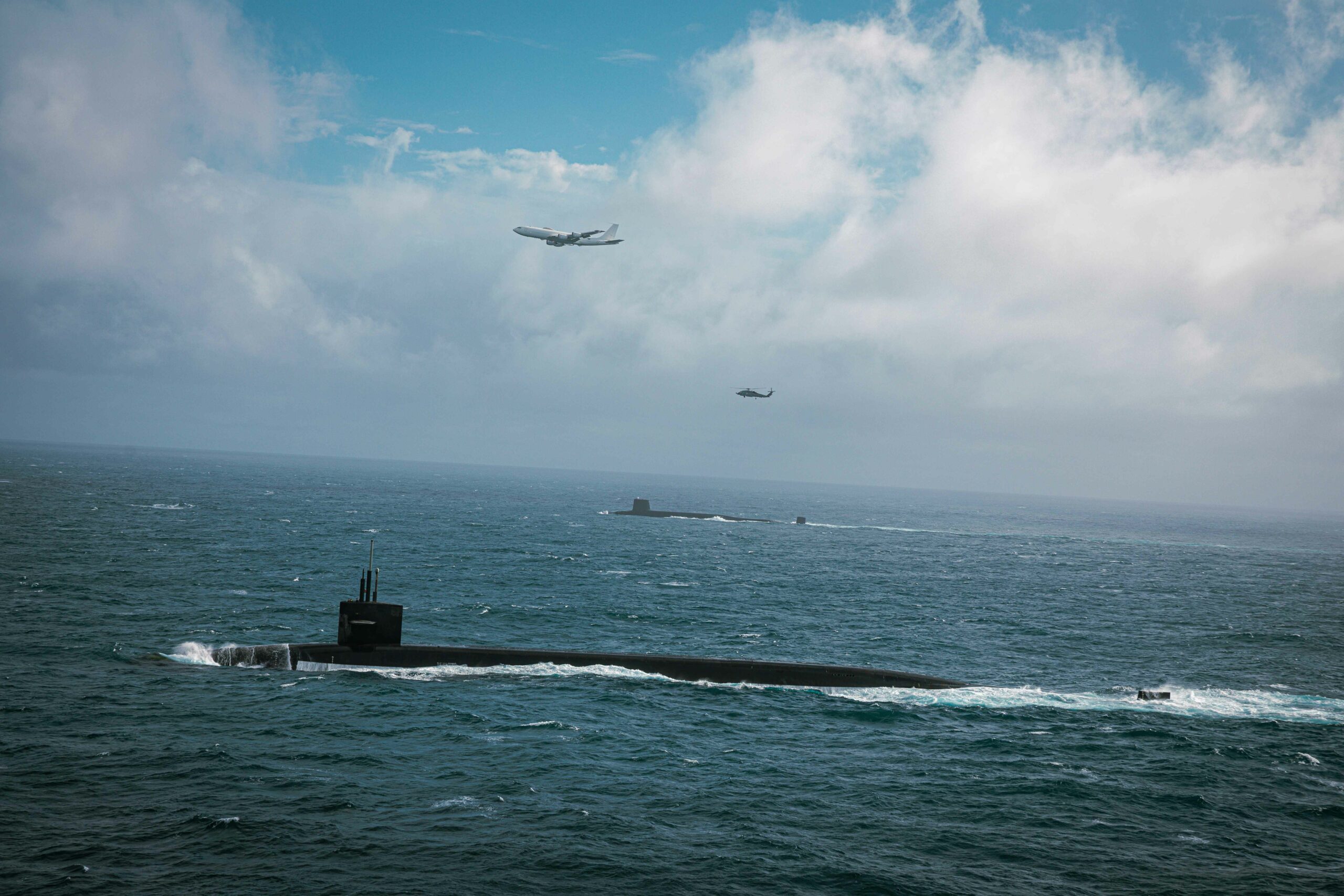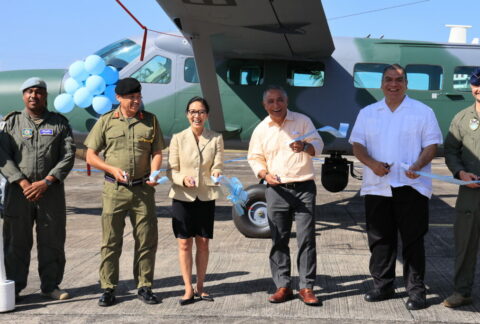Several United States ballistic missile submarines (SSBN) conducted at-sea operations, training, and port visits around the globe with one of its closest allies, the United Kingdom, during the months of October and November 2022. The combined U.S.-U.K. operations consisted of three key events occurring in the Indo-Pacific, Mediterranean Sea, and off the East Coast of the United States.
The first event took place in the Indian Ocean, as the U.S. Navy Ohio-class ballistic missile submarine USS West Virginia {SSBN 736), homeported in Kings Bay, Georgia, hosted U.S. Army General Michael “Erik” Kurilla, commander, U.S. Central Command (CENTCOM), while operating in international waters in the Arabian Sea October 19, 2022. Gen. Kurilla was joined on the West Virginia by Vice Admiral Brad Cooper, commander of the U.S. Navy’s Fifth Fleet. During his visit on board the SSBN, Gen. Kurilla received a tour and brief on the capabilities of the vessel, which operates globally under U.S. Strategic Command.
“I was thoroughly impressed with the crew of West Virginia; these sailors represent the highest level of professionalism, expertise, and discipline across the U.S. military,” said Gen. Kurilla. “West Virginia represents the kind of cutting-edge firepower and strategic combat capability available to CENTCOM.”

The USS West Virginia then headed south to visit the British Indian Ocean Territory (BIOT) island of Diego Garcia October 25-31. The U.S. Navy operates a support facility there that has a pier and runway to accommodate ships and aircraft. While moored pier-side in Diego Garcia, the West Virginia’s crew took on supplies, enjoyed some rest and relaxation, and conducted a crew exchange. Each of the U.S. Navy’s SSBNs has two crews, Blue and Gold, which alternate taking the submarine to sea on patrol. This maximizes the SSBN’s availability, reduces the number of submarines required to meet strategic requirements, and allows for proper crew training, readiness, and morale.
After departing Diego Garcia, the West Virginia conducted an at-sea training exercise with two U.S. Air Force B-1B Lancer bombers that were forward-deployed to Guam and a U.S. Navy E-6B Mercury “Take Charge And Move Out,” or TACAMO aircraft, that focused on communications to train and enhance Nuclear Command, Control and Communications (NC3) procedures. The event validated the interoperability between the SSBN, B-1Bs, and E-6B and exercised established tactics, techniques, and procedures using alternative methods of communications between these strategic platforms.
“West Virginia, like each of our ballistic missile submarines, is specifically designed for extended deterrent patrols,” said Vice Admiral William Houston, commander of U.S. Naval Submarine Forces, headquartered in Norfolk, Virginia. “The stealth and response capability of these submarines combined with the crew’s training make our SSBNs the most powerful warships in the world.”
An ocean and a continent away, a different U.S. Navy SSBN, the USS Rhode Island (SSBN 740), also home-ported at Kings Bay, conducted a port visit to another U.K. territory, the British Overseas Territory (BOT) Port of Gibraltar in the Mediterranean Sea, from November 1-5, 2022. This visit to Gibraltar follows one to the same port about a year earlier by the U.S. Navy ballistic missile submarine USS Alaska (SSBN 732) in June 2021.
“Rhode Island’s port visit to Gibraltar reinforces our ironclad commitment to our allies and partners in the region. The U.S. and U.K. share a strong history of cooperation, through exercises, operations, and cooperation activities such as this, that enhance our combined capabilities and partnership,” said U.S. Navy Captain John Craddock, Submarine Task Force 69 commander at the U.S. Sixth Fleet/U.S. Naval Forces Europe-Africa headquarters in Naples, Italy.
U.S. SSBNs also conduct routine port visits to His Majesty’s Naval Base (HMNB) Clyde, Scotland, where the U.K.’s SSBNs are based. In fact, Rhode Island was the last SSBN to visit HMNB Clyde back in July 2022. U.S. Navy attack submarines, guided-missile submarines, guided-missile cruisers, and guidedmissile destroyers also make routine visits to HMNB Clyde.
After departing Gibraltar on November 5, the Rhode Island conducted a similar at-sea communication training exercise that USS West Virginia did off Diego Garcia just days earlier. But Rhode Island operated with a U.S. Navy E-6B TACAMO aircraft and a U.S. Navy P-8A Poseidon maritime patrol and reconnaissance jet in the Mediterranean instead of with B-1B bombers.
The third and final event was a one-day at-sea training exercise with SSBNs from the U.S. and the U.K., operating together in the Atlantic Ocean off the coast of Georgia in November 2022. This exercise consisted of interoperability, surveillance, and communications training with U.S. Navy aircraft that included an E-6B TACAMO and two MH-60R Sea Hawk helicopters.
“SSBNs … are vital to a credible nuclear deterrence for the United States and our allies,” said U.S. Navy Admiral Charles Richard, former commander of U.S. Strategic Command in Omaha, Nebraska.
The U.K. and U.S. both use the Trident II D-5 Submarine-launched ballistic missiles (SLBM) on their current class of SSBNs. Both nations will also rely on the Trident II D-5 SLBM on their future classes of SSBNs, resulting in lower costs and enhanced interoperability between these key allies.
The U.K. and U.S. enjoy a special relationship, and share common economic, cultural, and security interests. This close partnership includes a commitment to strategic deterrence, as evidenced by our shared ports and bases, strategic weapon systems, exercises, and training that enhance deterrence and bolster security and stability around the globe.









